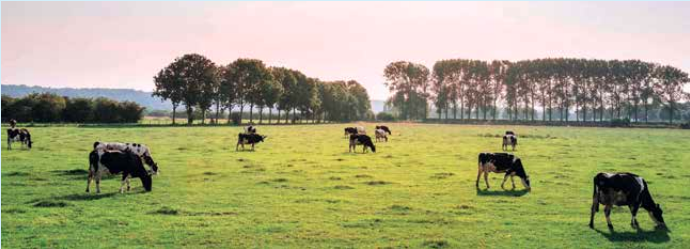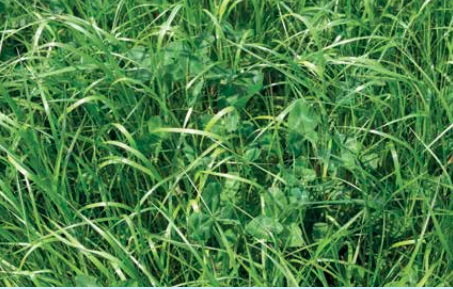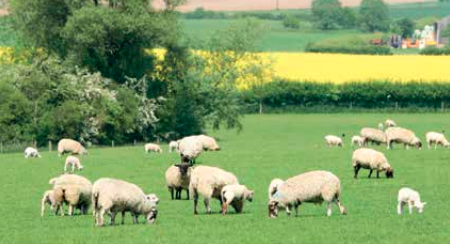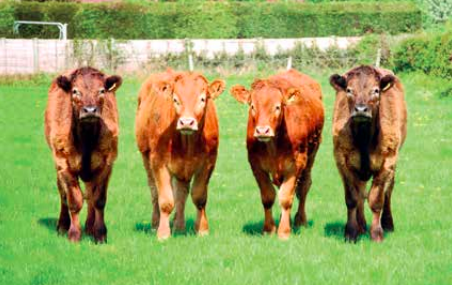AHDB Animal Scientist, Siwan Howatson, takes a closer look at the potential to incorporate livestock into the arable rotation through establishing a grass ley, while improving soil organic matter and increasing soil resilience.

Soil organic matter (SOM) is an essential element because it provides the soil with the resilience it needs to sustain a crop, through supplying nutrients and the right environment for growing crops by enhancing the physical, chemical and biological properties of the soil. Continuous arable cropping with little or no inputs of organic materials has led to a reduction in SOM on many arable soils. In some instances, arable land has SOM values below 1%, while an average of 4% is desirable.

Is grass the answer?
Incorporating temporary grass leys into arable rotations has the potential to enhance SOM levels. Improving SOM leads to increased moisture retention, better nutrient turnover and reduced risk of soil erosion. Grazing livestock on these temporary leys can also provide an extra advantage through the animal returns to the soil through manure, which is a good source of organic matter for the soil. AHDB research shows that adding amendments, such as farmyard manure or slurry achieves a yield benefit over and above the nutrient content of what you apply, with benefits seen after just two years.
Leys should be treated as an arable crop, with good soil structure and nutrient supply to ensure yields are maximised. The target for commercial grazing systems in the UK and Ireland is to use 10 t Dry Matter per hectare. There are many options for managing your grass leys, including grazing and silage production, and the type of ley should be chosen for its end purpose. See the table, which includes guidance on which type of grasses and clovers to use for your situation.

Managing your grass ley
A newly sown grass ley takes about 11 months to fully establish. During this time, it is important that the sward is encouraged to tiller as much as possible and is protected from any damage. An established perennial ryegrass sward typically contains 5,000–7,000 tillers/m2. The tillering process in new swards is strongly aided by grazing because it removes existing leaf and encourages a new generation of tillers to emerge at the base of the sward. Avoid using the new ley for cutting silage in the first six months, as this will not encourage tillering. Graze the new reseed as soon as it is not possible to pull the plants out of the ground by hand. This is usually at the two-leaf stage or when the grass has produced about 2,200–2,500 kg DM/ha.
Use sheep or youngstock for the first grazing, to minimise any potential soil compaction, particularly in wet conditions. Aim to graze autumn reseeds at about 6–8 cm down to 4 cm before the first winter to encourage tillering.

The need for multiple harvests, through cuts or grazing, means it is crucial to focus on utilisation, because this has an important impact on the cost of production. Utilisation can vary from less than 50% to more than 80% in well-managed systems. Improved utilisation is linked to investment in infrastructure (e.g fencing systems for grazed swards or machinery for cutting systems) and allocation of labour.
Black-grass bonus
If you are considering introducing a grass ley into your rotation, there is the opportunity for the cultural control of black-grass. It is important to remember that black-grass has low palatability for livestock, so the amount in the grass ley should be minimised. If the preceding arable crop had a high black-grass burden, ploughing is recommended to bury the seed below the germination depth. Delayed drilling of the ley in the autumn, until after the peak black-grass germination period, or drilling in the spring, will further reduce the number of blackgrass seeds germinating in the grass ley.
In either case, cultivations should be used to prepare a sterile seedbed, which can be managed with further cultivation and glyphosate. Minimising soil disturbance when drilling the ley will minimise any blackgrass germination. There are no herbicide options for controlling black-grass in the ley if it is to be used for grazing or conserved herbage. Cutting or grazing a grass ley within an arable rotation is recommended for black-grass control to minimise seed return, and allows a rapid decline in the weed in the seed bank, and a reduction in the resistance pressure to current herbicides. When returning the grass ley to arable production, some viable blackgrass seed will still be in the soil. Soil disturbance will stimulate this seed to germinate. Consequently, spraying off the grass sward with glyphosate and direct drilling is likely to result in the lowest black-grass population in the first crop following the grass.
Cost considerations
As with all crops, understanding production costs is crucial to ensuring the enterprise is profitable. Calculating the cost of the ley is a three-stage process: firstly, working out costs on an area basis, including establishment, inputs, machinery and rents; secondly, estimating your yield and, thirdly, working out the costs for pence per kilogram of dry matter. Worked examples of this can be found in the AHDB Livestock and Arable Rotation guide.

Harder to quantify are the benefits to soil health through organic matter increases, grazing benefits and improvements in black-grass control for following crops. In the right situation, a grass ley may well be a good option to consider for your system and soils.
More information on grazing techniques, including measuring grass and infrastructure, such as electric fencing, can be found in the AHDB Better Returns Programme (BRP) manuals. You can read more on introducing livestock into arable rotation in our new guide, available at: cereals.ahdb.org.uk/livestock